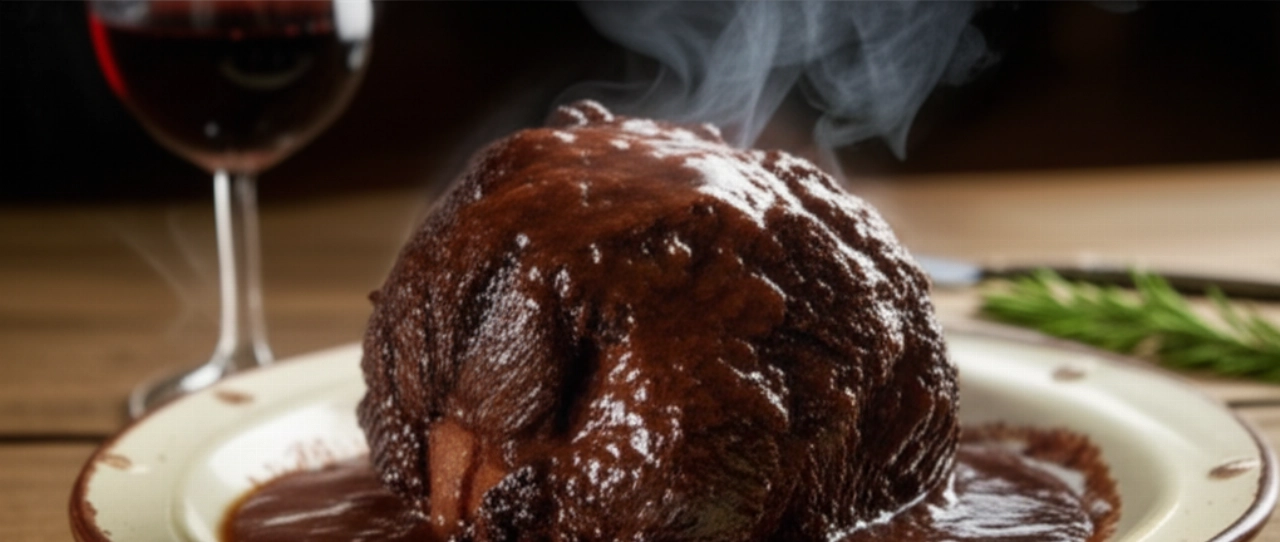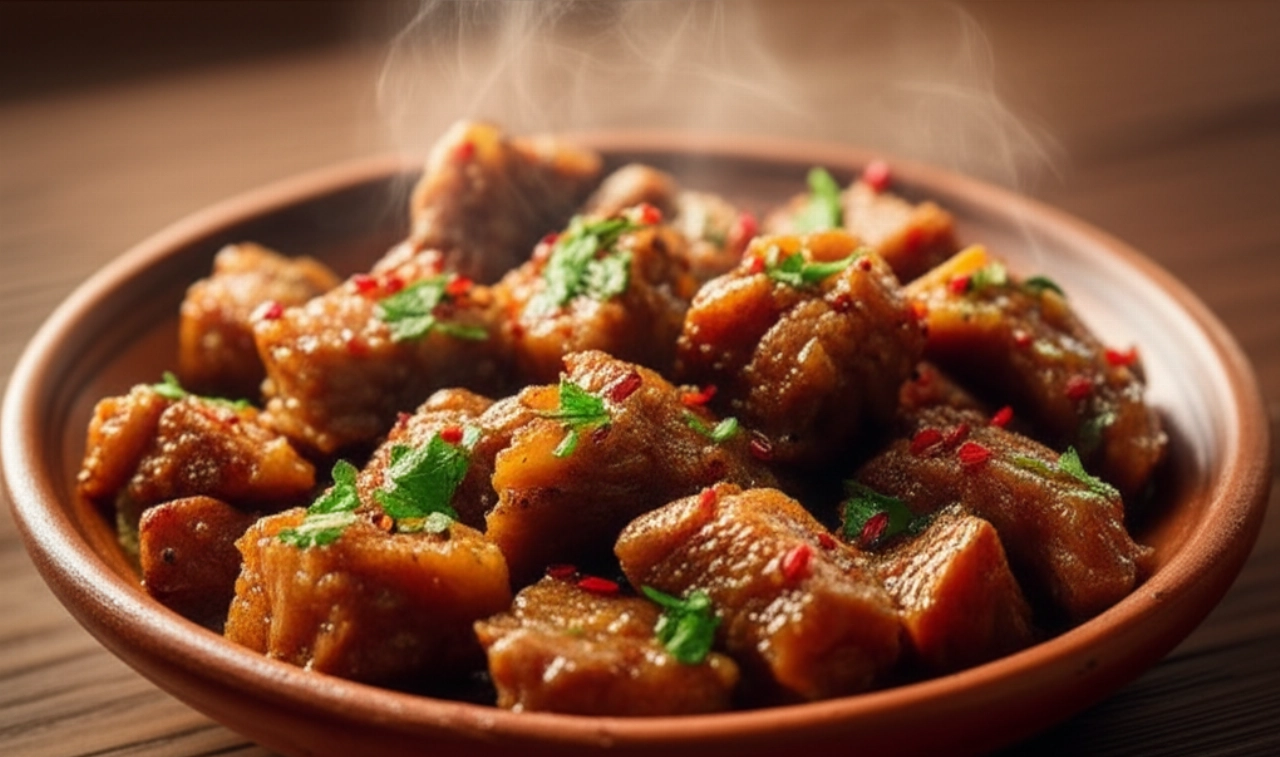Dreaming of serving a Bistecca alla Fiorentina so perfect it makes your guests' eyes light up? The one with an irresistible crust outside and a tender, juicy, intense ruby-red heart, just as Tuscan tradition dictates?
Too often, however, we face the fear of ruining it: overcooked and dry meat, a burnt crust, or the fear of wasting such a prized cut of meat. It seems like a task for Michelin-starred chefs, right? And finding the "true" recipe, one that guarantees results, can be a challenge.
Make yourself comfortable. On this page, you won't just find a list of ingredients, but the definitive guide, full of tricks and tips, to prepare the best Bistecca alla Fiorentina of your life. I'll guide you step by step, revealing the secrets for choosing the cut, preparation, and perfect cooking. Success is guaranteed, and your diners will compliment you!
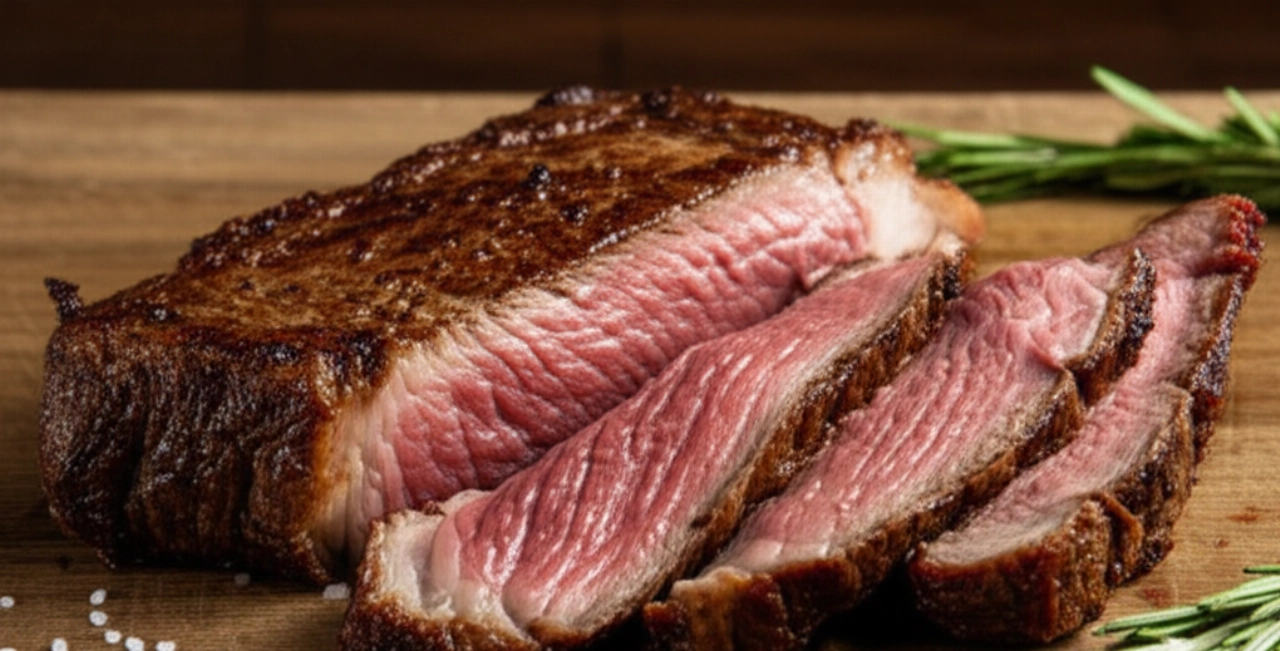
Ingredients for the Perfect Steak: The Choice That Makes the Difference
Bistecca alla Fiorentina is not just a cut of meat; it's an experience. And like any masterpiece, it starts with the raw ingredients. Here's what you need and why:
- The Meat: No compromises here. True Fiorentina is a cut from the loin of a young steer (or heifer) of prized breeds like Chianina, Maremmana, Romagnola, or Podolica. It must have the T-bone separating the tenderloin from the sirloin. Thickness is crucial: minimum 3-4 cm, ideally 5-6 cm. A good butcher will advise you. Make sure it's well-aged; that's the secret to tenderness!
- Coarse Salt: Not fine salt! Coarse salt, preferably sea salt, is essential for creating the perfect crust and seasoning the meat without dehydrating it too quickly.
- Black Pepper: Freshly ground, for an intense aroma that enhances the meat's flavor.
- Extra Virgin Olive Oil: A drizzle, of excellent quality, to lightly season the steak after cooking, enhancing its flavors.
Grandma's tip: Take the steak out of the refrigerator at least 2-3 hours before cooking. It must reach room temperature. This is a crucial step for even cooking and to prevent the meat from "searing" on the outside while remaining cold inside.
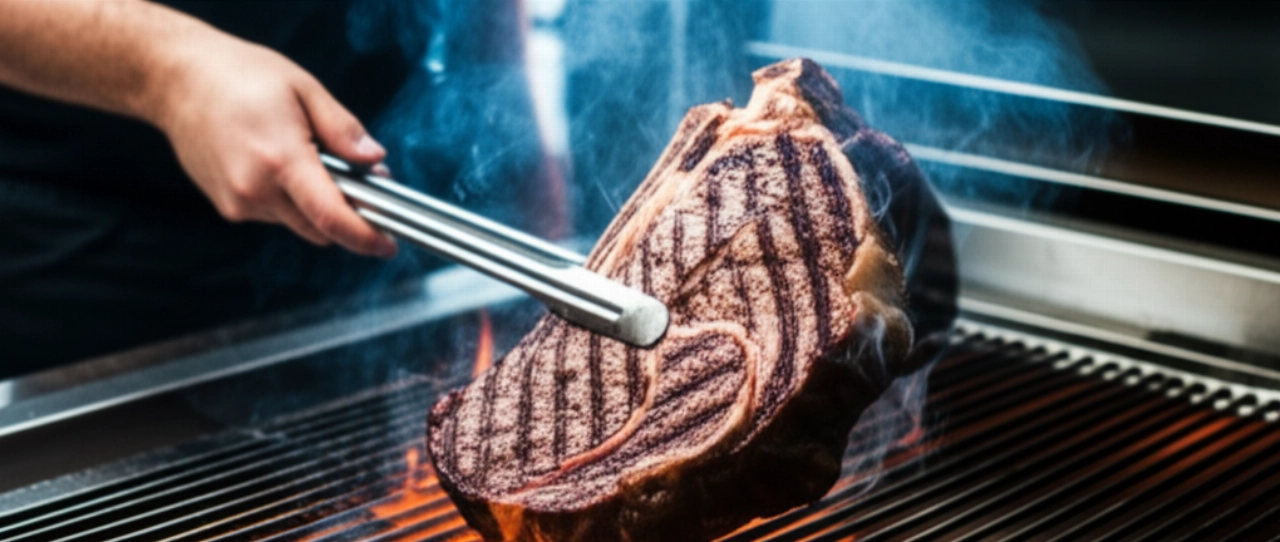
3 Common Mistakes to Avoid for a Perfect Steak
Preparing a Fiorentina is an art, but also a science. Here are the most common mistakes that can ruin your masterpiece and how to avoid them:
- Cooking cold meat from the fridge: As mentioned, the meat must be at room temperature. If you cook it cold, the outside will cook too quickly while the inside remains cold or raw, not "rare."
- Flipping it too often: The steak should be flipped only once! Once per side, plus possibly one minute on the bone. Flipping it continuously prevents the formation of the outer crust and disperses its juices.
- Salting before cooking: Salt tends to draw liquids from the meat. Salting the steak long before cooking would make it less juicy. Salt it generously only a few moments before placing it on the scorching hot grill.
- Not letting it rest: This is perhaps the most serious mistake. As soon as it's removed from the heat, the meat is "stressed," and the juices are concentrated in the center. If you cut it immediately, you'll lose them all. Resting allows the juices to redistribute, making the meat uniformly juicy.
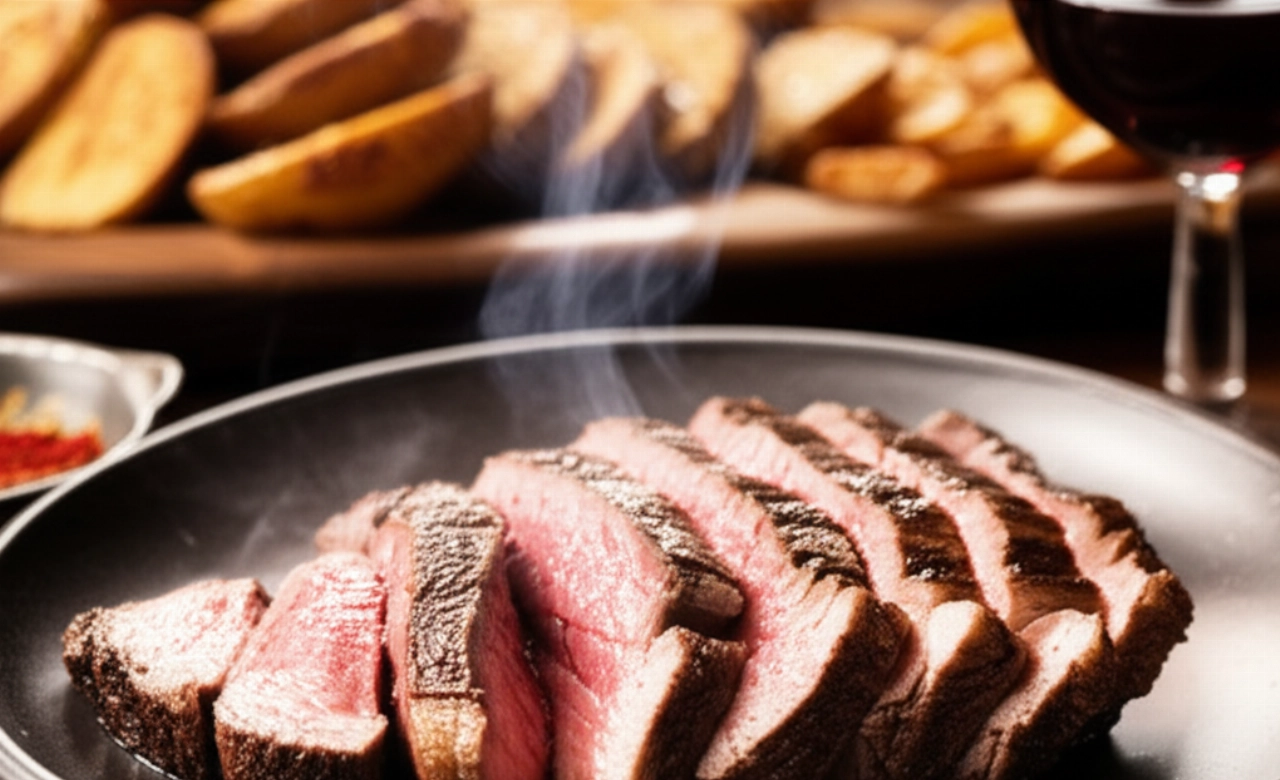
The Extra Touch: The Secret to an Infallible Crust
My grandmother, who knew a thing or two about steaks, always used to say: "The Fiorentina must 'sing' on the grill!". The secret to that dark, flavorful, almost caramelized crust, which contrasts with the tender interior, lies in heat and patience.
Use a cast iron griddle or a very thick grill and bring it to a very high, almost smoking temperature. Don't be afraid of the initial smoke! It's that intense heat that immediately seals the surface, creating the Maillard reaction that gives flavor and color. Do not grease the griddle; the meat should cook in its natural fat.
Let's Prepare Bistecca alla Fiorentina Together: The Step-by-Step Guide
Now that we have all the secrets, let's get cooking. Follow these steps, and success is guaranteed!
- Prepare the Steak: Take the steak out of the fridge at least 2-3 hours beforehand. Pat it dry thoroughly with paper towels to remove any moisture (moisture prevents crust formation). A few moments before cooking, generously salt both sides with coarse salt.
- Heat the Griddle: Place a cast iron griddle (or grill) over the highest heat you have. It needs to become scorching hot, almost smoking. You can test it with a drop of water: if it evaporates instantly, it's ready.
- Cooking: Place the steak on the scorching hot griddle. You'll immediately hear the meat "sing." Let it cook for 5-7 minutes per side (for a thickness of 4-5 cm) for a perfect rare cook. Do not touch it, do not move it, do not flip it! After the first side, flip it and cook it for the same amount of time on the other side. If your steak has a thicker bone side, you can also cook it for 1-2 minutes "standing" on the bone.
- Resting: Once cooked, transfer the steak to a wooden cutting board. Cover it loosely with aluminum foil (without tightening, to prevent it from "sweating") and let it rest for at least 5-10 minutes. This step is CRUCIAL for redistributing the juices and making the meat incredibly tender.
- Serve and Enjoy: After the resting time, slice the meat into thick pieces, separating it from the bone. Drizzle with a thread of raw extra virgin olive oil and a grind of fresh black pepper. Serve immediately, perhaps accompanied by a simple side dish like "fagioli all'uccelletto" (beans with tomato and sage) or roasted potatoes.
Tips and Frequently Asked Questions about Bistecca alla Fiorentina
Here are some of the most common questions I get asked about Bistecca alla Fiorentina:
- What is the best cut for Fiorentina? The traditional cut is the T-bone loin of young steer, which includes both the tenderloin and the sirloin. The most prized breeds are Chianina, Maremmana, Romagnola.
- How do I know if it's "rare" enough? The "finger test" is a good indicator: press the meat with a finger. If it's very soft, it's rare. If it's firmer, it's medium. But the best way is to use a kitchen thermometer: 50-55°C (122-131°F) at the core for a rare cook.
- Can I cook it in a pan? Yes, but the pan must be cast iron and very thick to reach and maintain the necessary heat. The result will still be slightly different compared to grilling.
- Can I freeze Bistecca alla Fiorentina? It is not recommended to freeze raw steak of this quality. It's better to buy it fresh and consume it within a few days. Cooked meat can be frozen, but it will lose some of its tenderness.
- What are the ideal side dishes? Traditionally, it's served with "fagioli all'uccelletto" (beans with tomato and sage), roasted potatoes, or a fresh salad. The important thing is that the side dish doesn't overpower the flavor of the meat.
There you have it! Now you no longer just have a recipe, but all the secrets to bring a dish to the table that tastes of tradition, passion, and guaranteed success. Your Bistecca alla Fiorentina will be a true masterpiece, capable of eliciting a "Wow!" with every bite.
Don't be afraid to experiment, but start from this solid base, and you'll see that applause won't be lacking. Cooking is an act of love, and this recipe is my way of making you feel at home, just as if you were in my kitchen.
Have you tried our recipe? We're eager to see your masterpiece! Leave a comment below, tell us how it went, or share a photo on Instagram by tagging @CercaRicette.it. If you loved this Bistecca, you can't miss our recipe for Crispy Roasted Potatoes or for another icon of Italian cuisine like Bolognese Lasagna.
